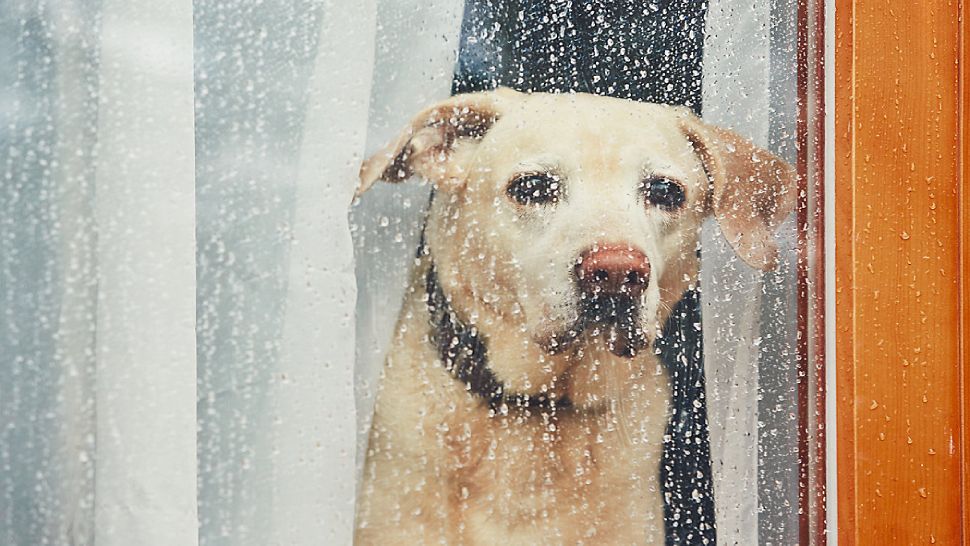Dogs of all ages tend to act differently when there's a thunderstorm or other active weather happening outside, but what causes it and what can we do?
Veterinarians have many theories as to why normally calm dogs act differently during active weather, but the main, collective reasons are the darkening skies combined with claps of thunder, and dogs can even sense the dropping barometric pressure.
Because of their fears, dogs may pace, be extra clingy to their owners, or even hide in closets. My family dog even likes to go upstairs and lay next to his bed during a storm or even if it's just raining with no thunder!
Dogs that have a storm phobia are more likely to have similar reactions to fireworks and other loud noises, but it's not a guarantee.
Dogs who are scared and not themselves during storms can be painful to watch, and at times, we can feel helpless. There are things dog owners can do to help their dogs feel better.
Researchers say consoling your scared dog by petting them while they're in a fearful state, such as possibly whimpering or climbing on you, may only make the dog feel like its being rewarded for such behavior and will cause him or her to continue the behavior in the future.
Encouraging a calming behavior such as having your dog lay by your feet and rewarding the calmness can help.
You don't want your dog to feel like they're being rewarded for their scared behavior.
Distractions can also play a large role in helping your dog feel more secure and curbing the scared behavior. Try having the dog play with their favorite toy. Even rewarding them with a treat if they remain calm can help.
Be mindful of where your dog goes during a storm. This may be their safe space that they feel most comfortable. Make sure this place is easily accessible while the storm is taking place.
Such places may be an open crate, a bedroom, the basement, or even the bathroom.
Desensitizing your dog to the sound of storms throughout the year takes time but may work for your dog. Over the winter, you can quietly start playing thunder sounds, and eventually increase the sound as the dog cooperates.
By spring or summer, you should be able to have the sound of thunder playing loud enough that the dog is okay with the sound and won't act differently when the first storm of the season happens.
When all else fails, you can always consult with your local veterinarian on what they suggest the best course of action may be.



